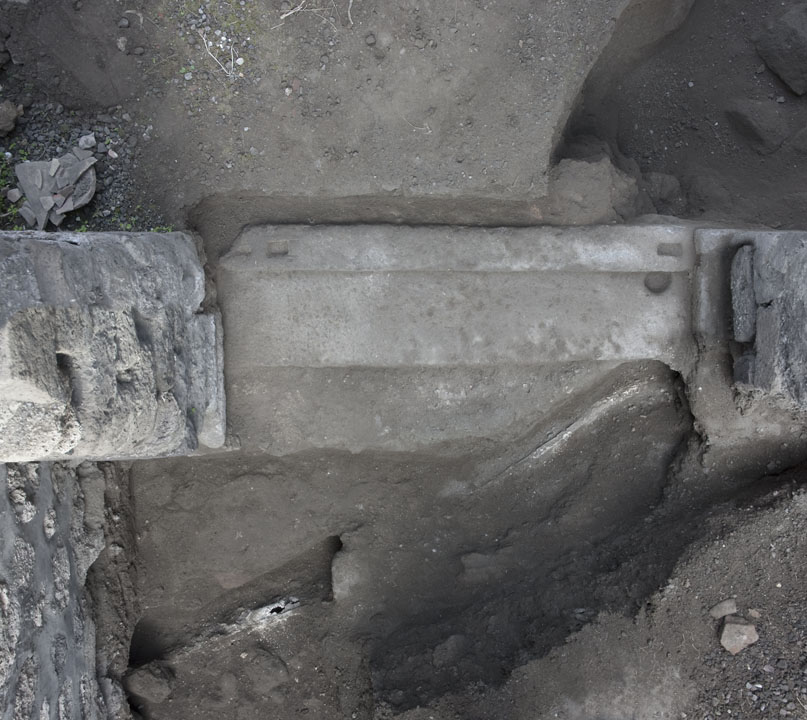Floor
Description
Thomas Staub
The pavement of this room could only be studies at a few places, since it lays approx. 0.15 ??" 0.2 m underneath the current surface. It seems best preserved near the threshold to room b, where it consists of a lime mortar with some inserted pottery split, but not enough terracotta as to be identified as a cocciopesto. The bedding seems to be made of hard packed earth, some stones and sometimes mortar. Along the east wall a 0.84 m wide area was investigated in 2009 by R. Forsell. Where preserved the floor or its bedding was situated 0.18 ??" 0.22 m underneath the current surface. The filling in between varied along the wall: in the northernmost part it consisted of loose, rather dark brown soil containing some pieces of tiles and stones; in the central part the earth contained much lapilli, indicating that it never had been thoroughly cleaned; the southernmost part finally the earth was quite hard and grey, containing remains of ash and charcoal and quite a few animal bones. At the n-e corner a pieces of an amphora was inserted standing into the floor. The bottom had been cut off and a second one was beneath it, i.e. they served as drain. The uppermost of them was built into a rectangular structure, preserved up to 0.3 m height between the drain and the north wall, on the other side imprints or a foundation could be observed at the bottom. Thus it seems that this part of the room contained some sort of workbench with an included drain. Nearby a further hole went into the soil, but if on purpose or not could not be established with certainty. Next to it some remains of the floor, again lime-mortar with pottery split or cocciopesto. In the central area only the presumed bedding ??" hard earth, pieces of tiles and stones ??" were preserved. In the southern part, a larger triangular stone blocks was placed on the bottom, surrounded by a hard greyish layer containing ash.


